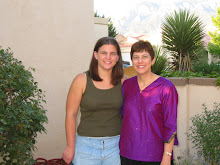A sea of parents intensely interested in providing the best education for their children wait expectantly for the school program presentation. However, the fact that the speaker and audience lack a common language obstructs effective communication. Despite the availability of oral and written translation, the voice of the presenter is lost in translation. This is especially worrisome when the emotional impact of the presentation is more important than the informational content.
To ensure that both the translator and audience have access to the information, complete text on the PowerPoint slides and on the hand-outs has been provided in the past - sometimes in both English and the audience's native language. In fact, a narrative description of the program is also provided in the audience's native language. Then, one wonders about the role of the speaker and the translator. It takes a long time to repeat all the written information in two languages. The redundancy is boring as one can see from the the original PowerPoint describing the SIM program.
In order to retain the emotional impact of the presentation, ESL students - who do share the audience's language - address prospective parents and students with honest personal testimonials. Instead of acting as a translator, the school liaison is transformed into a talk show host interviewing each student. The unrehearsed answers and testimonials ring true and touch the hearts of the audience.
Still, the parents clearly want to hear directly from an administrator, admissions officer or teacher. That is the reason they have made the journey. I wonder how I can add anything to the narrative description of the program and the children's testimonials. The evocative images on the presentation from IS Brussels provided an answer. Although higher quality images from student lives at ISB are still needed, the new style presentation, a work in progress, is posted here.
A notes page will be created which is both separate and different from the presentation images. This can be written in both English and the audience's native language. It is important to give the information in English for many read but do not speak English. A translation is always approximate, so the English speaking audience members should have the original copy.
The success of a presentation only relies in part on the product of technology. The effectiveness of a presentation depends on how the audience interacts with a combination of images, texts and speakers. Therefore, it is important to determine the role and objectives of the technology piece in the larger context before its creation.
Subscribe to:
Post Comments (Atom)


What a difference Barbara! The images tell a story that will definitely help break down linguistic or cultural differences! I'm sure it will be a huge success!
ReplyDeleteNice blog Barbara! You are right that without common language the audience and the speaker obstructs effective communication. That is why power point presentation is really essential to the speaker and his audience for the better understanding of what the speaker talks about.
ReplyDeleteTraining Presentations